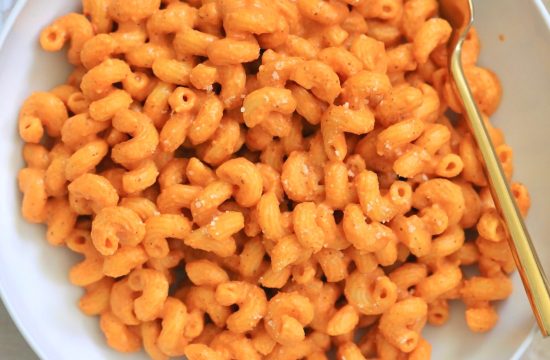Article by Dr Raghuram Y.S. MD (Ay) & Dr Manasa, B.A.M.S
Yakrit, an organ described in Ayurveda anatomically correlates to ‘the liver’ explained in modern medicine.
Anatomy of Yakrit: Liver
Yakrit: word derivation and meaning
यं संयमं करोति, कृ तुक् च।शब्दस्तोमनिधि।
Yakrit is that which does
– YA – Yam samyama – maintains (many functions?) and
– KRIT / KRUT – Kru tuk – does (many actions?)
The organ which maintains (ya) and does (krit / krut) is called yakrit / yakrut.
Anatomical Location of Yakrit
(हृदयस्य) दक्षिणतो यकृत् क्लोम च।सु.शा.४/३०।
कुक्षौ दक्षिण्न भागस्थे मांस पिण्डम्।
तद्वर्धते रोगे च।शब्दस्तोमनिधि।
यकृत् कालखण्डं दक्षिणपार्श्वस्थम्।डल्हण, सु.शा.४/२५।
We can find indirect references of the anatomical location of the liver.
While explaining the anatomy of hrdaya – heart, it is said that the liver is located towards the right of the heart (considering that heart is mostly a right sided organ) and inferior to it. This is exactly the anatomical position of the liver as explained in modern anatomy. It is located in the right hypochodrium region i.e. right upper quadrant of the abdomen.
Yakrit is a mamsa pinda – a mass of flesh, located in the right side of the abdomen. When it increases in size (pathological), it will cause many diseases. Here we need to see that the liver is not a muscular mass, but it resembles one. The texture of yakrit is also muscular.
Synonyms of Yakrit
– Kala Khanda
– Mamsa Khanda
– Jyothi Sthana
– Agni Sthana
Yakrit relationship with Pliha
Pliha, another organ explained in Ayurveda correlates with ‘the spleen’ explained in modern anatomy. We can see that Ayurveda has often explained the organs yakrit and pliha together. Though they have explained them as individual organs, Ayurveda masters might have observed a close relationship, mainly in terms of their functions between these organs. Therefore, they are explained together.
In the context of 8 types of Udara Roga i.e. abdominal enlargements (diseases) / disorders we can see that Ayurveda treatises have explained Plihodara i.e. enlargement of abdomen due to enlargement of spleen – correlates to splenomegaly. But Yakrutodara i.e. hepatomegaly has not been explained separately. Ayurveda masters have said that Yakrutodara is same as Plihodara but appears on the other side (while spleen enlarges on the left side of the abdomen, liver enlarges on the opposite side i.e. right side).
The apya rasa i.e. rasa tissue having the nature of water, on entering yakrit and pliha, would get red colored by the action of ranjaka pitta and becomes rakta i.e. blood tissue. Here we can see that physiologically both the liver and spleen are involved in the formation of blood tissue and so are interrelated organs.
Embryological formation
In the fetus / embryo – the liver and spleen, both are formed from shonita – blood. This is also a common connection between these two organs, having the same origin.
Yakrit is a matruja avayava – being a soft organ it is said to be derived predominantly from mother. It is one of the maternal factors – matruja bhava, to manifest in the child.
Raktavaha Srotas
रक्तवहे द्वे तयोर्मूलं यकृत् प्लीहानौ रक्तवाहिन्यश्च धमन्यः।
तत्र विद्धस्य श्यावाङ्गता ज्वरो दाहः पाण्डुता शोणितागमनं रक्त नेत्रता च।सु.शा.९।
शोणितवहानां स्रोतसां यकृत् मूलं प्लीहा च।च.वि.५।
Liver, spleen and the arteries carrying blood are the roots of raktavaha srotas – the blood carrying channels in the body. This also means to tell that both these organs are related to manufacture and maturation of blood and also to transport mature blood in the channels carrying the blood to different parts of the body.
The injury to these srotas and its roots cause discoloration of the body, fever, burning sensation, bleeding and redness of the eyes.
Related Reading – Raktavaha Srotas
Raktashaya
शोणितस्य स्थानं यकृत् प्लीहानौ।सु.सू.२१।
जीव रक्ताशय इति – जीवतुल्यं रक्तम्, तस्य आशयस्थानम्, तच्च प्लीहा इति प्रसिद्धं, हृदयस्य वामाश्रितं भवति।
Rakta = blood, Ashaya = seat,
Yakrit – liver and Pliha – spleen are said to be the seats of rakta – blood.
Raktadhara Kala
द्वितीया रक्तधरा नामा, मांसस्याभ्यन्तरतः तस्यां शोणितं विशेषतश्च सिरासु कृत् प्लीहनोश्च भवति।
वृक्षाद्यथाभिप्रहारात् क्षीरिणः क्षीरमावहेत्।
मांसादेवं क्षतात् क्षिप्रं शोणितं संप्रसिच्यते॥सु.शा.४॥
Kala means membranes or layers. The second kala is called raktadhara kala – the membranes holding or shielding the blood tissue. It is embedded in the muscle tissue. This kala is also present inside the siras (blood vessels), yakrit (liver) and pliha (spleen).
A simily explaining this kala says ‘When we cut a branch of a latex yielding plant, the milk or latex flows out of it. Similarly, when we cut the mamsa i.e. muscle tissue, we can find the plasma and blood oozing out of it. This is a proof of the raktadhara kala being located deep inside the pulp of the muscle tissue.
Functionally, the epithelial layers of the blood vessels, the cells of liver and spleen and the entire haemopoietic system shall be considered as raktadhara kala.
There are two peshis related to yakrit and two peshis related to pliha. Therefore, there are four muscles related to the liver and spleen. We can see that there are actually no muscles in and around the liver and spleen. Probably Ayurveda was looking towards diaphragm or thick layers of peritoneum in relation to these organs as the peshis related to these two organs.
Among the dhamanis, two are mentioned as raktavahini dhamanis i.e. the dhamanis carrying blood tissue. Though their location has not been specified it can be inferred that they are rooted in the yakrit and pliha.
Though the connection of yakrut and siras has not been directly mentioned, we can connect the dots from the references we get in the treatises. Sira is the upadhatu – sub-tissue of rakta dhatu. Yakrut and Pliha are the roots of raktavaha srotas. So, rakta, sira, raktavaha srotas and yakrut are interconnected structurally and functionally. So, all siras are connected to the yakrit. We can also see that the liver has its own circulatory apparatus – portal circulation and the pulp of the liver is enriched with blood vessels. The adhogami siras i.e. the veins moving in the downward direction can be assumed to be related to yakrit, just like they would with the other organs of the abdomen and lower limbs.
Yakrit, as an organ, has not been included in any category of marmas. The below mentioned Marmas are located in and around yakrit –
– Nabhi Marma – in the navel region
– Parshva Sandhi Marma – lower portion of hip bone
– Hridaya Marma – in the chest, the heart and the vessels connected to it
– Stanamula – below the right breast (the other is located beneath the left breast region)
– Stanarohita – on the right side of the chest, near the breast (the other is located on the left side of the chest, near the left breast)
– Basti / Vasti – in the region of urinary bladder, represents urinary bladder – though it is far off organ in relation to the liver, it shall be considered in this context because of vasti being udaragata marma i.e. marma located in the abdomen, the liver too being an abdominal organ.
– Guda – rectum or anus and rectum, the lower portion of colon – shall be considered in accordance with the same logic explained above (vasti).
These are all the structures connected to each other by prana energy. If they are damaged, they may cause functional impairment, delayed death or immediate death. This may also impact the liver, it being an organ in the proximity of these marmas.
Nabhi Marma is closely connected to the Yakrit in comparison to the other marmas mentioned above. As mentioned above, Yakrit is formed by shonita – blood, it forms the root of raktavaha srotas, it is a raktashaya and it has embedded in it the raktadhara kala. Nabhi is a sira marma – predominant in veins. Siras are also related to the blood tissue. In fetal circulation the fetus gets its nutrition through the nabhi of the child connected to the mother. This rakta passes through the yakrit of the child.
Anatomical Neighbors of Yakrit
The reference available for the organs located in the neighborhood of the Hridaya i.e. heart shall be considered as the neighboring organs of yakrit as well.
Towards the left of Hridaya are located pliha and phupphusa. Towards its right are located yakrit and kloma.
Putting this from the perspective of anatomical neighbors of yakrit, we can tell –
– Above the yakrit, Hridaya – the heart is located in the chest cavity, being separated by diaphragm
– Towards the left (left upper quadrant of abdomen, in the immediate neighborhood of yakrit is located the pliha – the spleen
– Towards the left of yakrit and above the level of pliha is located the phuphusa – the lung (left lung)
– Very near to it, on the right side itself (right upper quadrant of abdomen) is located the kloma. Now kloma is a debatable organ, the detailed description of which is not available in Ayurveda texts. It has been compared to many organs in the body. But taking this anatomical reference, the nearest organ to the liver, in or near the right upper quadrant where it is located, can be either gallbladder (below the liver) or right lung (above the liver, in the chest cavity).
Other points to consider
Dosha Relation – Yakrit is related to Ranjaka Pitta, which helps in conversion of rasa to rakta.
Dhatu Relation – Since Yakrit is involved in the formation of Rakta Dhatu – blood tissue, blood, its formation and distribution is directly under the control of Yakrit (and Pleeha).
Mala Relation – Ranjaka Pitta gives the stools (feces) its normal color.
Agni Relation – Yakrit is the seat of Ranjaka Agni.
Related Reading – ‘Yakrit Kriya Shareera – Physiology of Liver – Ayurveda Perspective’















